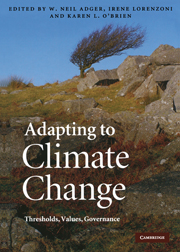Book contents
31 - Conclusions: Transforming the world
Published online by Cambridge University Press: 31 August 2009
Summary
Our nature: adaptable
In geological terms, the human presence on the Earth has been exceptionally brief. Yet during that time, biological evolution and cultural innovations have permitted us to colonize most of the Earth's terrestrial regions. We are found in a wide diversity of physical environments and thrive under a range of climate characteristics. If we use the spread of humans as an adaptation metric, we must be considered a successful species. If we increase the focal length of our analytical lens by a couple of magnitudes, however, we begin to see some details that undermine assumptions of overall success. Entire societies disappear. If we increase the focal length even more, we can see that even within societies there are successes and failures across space and through time. Undoubtedly, we are an adaptable species, but adaptation is not synonymous with smooth transition or change. When we consider different scales of analysis we are forced to consider closely the process of adaptation and the consequences of actions and inactions. Our ability to inhabit diverse and changing environments comes at a price – to individuals and entire societies.
Much research in climate adaptation has focused on policy, strategies, technologies and the capacities required to facilitate their successful deployment. While our current level of adaptedness relative to climate and the environment is clearly a product of purposeful action, it certainly is also co-produced by autonomous actions. Autonomous actions occur in response to change, irrespective of policy directives and without external assistance.
- Type
- Chapter
- Information
- Adapting to Climate ChangeThresholds, Values, Governance, pp. 491 - 500Publisher: Cambridge University PressPrint publication year: 2009
References
- 9
- Cited by



